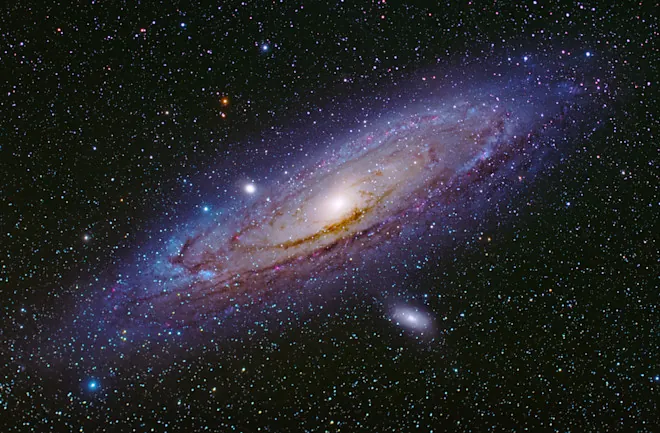
UNAM Unveils Cutting-Edge Software to Create the Most Accurate Map of the Milky Way!
2025-04-10
Author: Wei
Unlocking the Secrets of Our Galaxy
In a groundbreaking initiative, scientists from the National Autonomous University of Mexico (UNAM) are teaming up with experts from the Sloan Digital Sky Survey (SDSS) to forge the most precise map of the Milky Way's interstellar regions ever created. Central to this ambitious project is the innovative Data Analysis Pipeline software, designed specifically for processing complex astronomical images.
A New Era in Astronomical Mapping
Sebastian Francisco Sanchez Sanchez, a leading researcher involved in this monumental effort, shared insights into the exciting mapping process. Utilizing state-of-the-art equipment for spectroscopic analysis, the team aims to meticulously detail the diverse interstellar materials that compose our galaxy.
"We are charting the Milky Way's interstellar medium, as well as neighboring galaxies, using an entirely new technique devised from scratch," Sanchez explained. "After nearly six years of dedicated work, we've finally reached a point where our efforts yield significant scientific results."
Capturing the Cosmos
To showcase the capabilities of their new system, the UNAM specialists focused on the Orion constellation, capturing an astonishing image composed of approximately 200,000 individual photos. This breathtaking image spans hundreds of times the size of the Moon, yet it only represents a tiny fraction—less than 1%—of the vast area they aim to explore.
Revolutionary Analysis Tools
Sanchez further elaborated on the sophisticated Data Analysis Pipeline software, which precisely corrects stellar continuum characteristics and accurately retrieves vital parameters of emission lines, including flux, equivalent width, systemic velocity, and velocity dispersion.
He pointed out that the SDSS employs a network of robotic telescopes stationed at the Las Campanas Observatory in Chile's Atacama Desert. While these advanced instruments have been operational for some time, their full capabilities have only recently come online, paving the way for groundbreaking insights into the interstellar dust and gas that are key to understanding galaxy formation and evolution.
Peering into the Past and Future
Sanchez highlighted how past observations relied on integral field spectroscopy technology, which dissects light from nearby galaxies to reveal their stellar compositions. This innovative mapping effort promises to illuminate the evolution of the galaxies we observe today and unlock mysteries that have been shrouded in darkness for centuries.
This endeavor not only showcases the remarkable advances in astronomical technology but also represents a significant step forward in our quest to comprehend the vast universe we call home.

 Brasil (PT)
Brasil (PT)
 Canada (EN)
Canada (EN)
 Chile (ES)
Chile (ES)
 Česko (CS)
Česko (CS)
 대한민국 (KO)
대한민국 (KO)
 España (ES)
España (ES)
 France (FR)
France (FR)
 Hong Kong (EN)
Hong Kong (EN)
 Italia (IT)
Italia (IT)
 日本 (JA)
日本 (JA)
 Magyarország (HU)
Magyarország (HU)
 Norge (NO)
Norge (NO)
 Polska (PL)
Polska (PL)
 Schweiz (DE)
Schweiz (DE)
 Singapore (EN)
Singapore (EN)
 Sverige (SV)
Sverige (SV)
 Suomi (FI)
Suomi (FI)
 Türkiye (TR)
Türkiye (TR)
 الإمارات العربية المتحدة (AR)
الإمارات العربية المتحدة (AR)